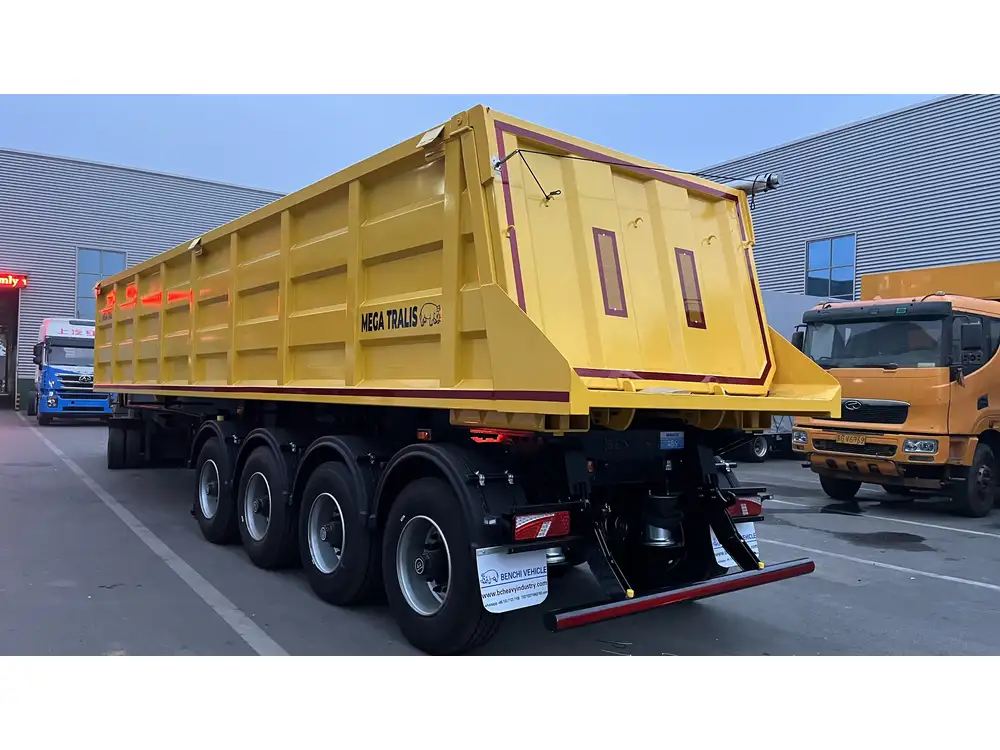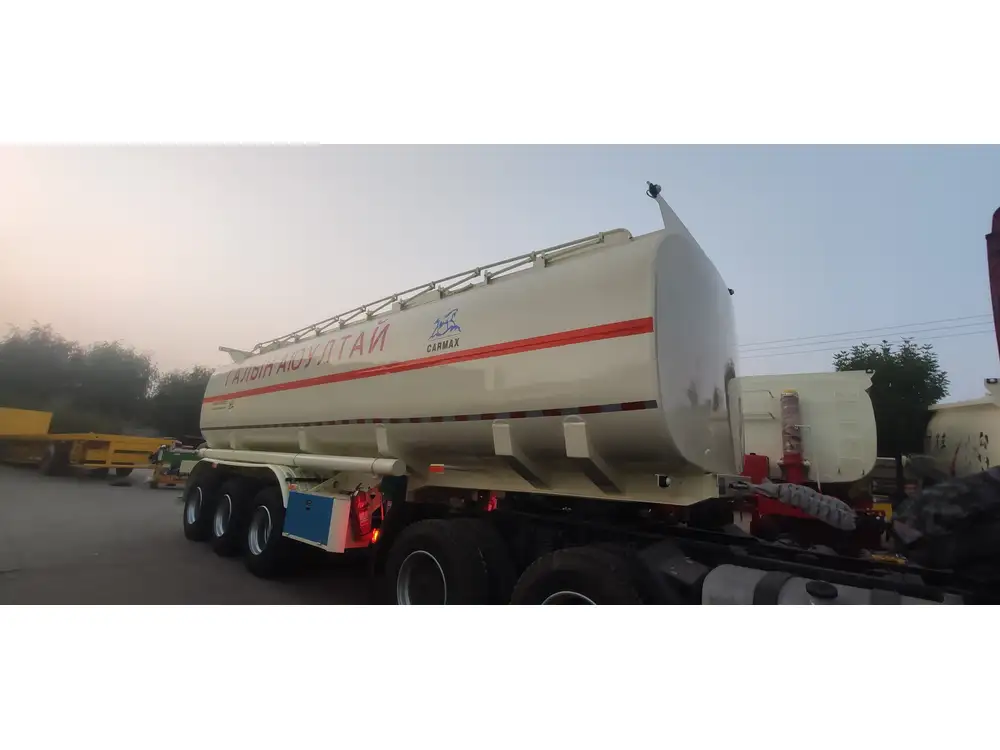When it comes to the logistics and transportation industry, understanding the specifications and capacities of your equipment can streamline operations and enhance productivity. In this comprehensive guide, we delve into the essential details around end dump trailers, focusing on their capacity measured in cubic yards. Whether you’re a seasoned professional or a newcomer to the trucking industry, our exploration will leave you well-informed and ready to make effective decisions regarding your hauling needs.
What is an End Dump Trailer?
An end dump trailer, often referred to simply as an end dump, is a heavy-duty vehicle designed specifically for transporting loose materials such as sand, gravel, and dirt. Unlike standard trailers, end dumps have a unique mechanism that allows the trailer bed to tilt backward, facilitating the unloading process by allowing materials to flow out easily and efficiently.
Key Features of End Dump Trailers
| Feature | Description |
|---|---|
| Structure | Typically consists of a sturdy frame with a hydraulic lifting system. |
| Capacity Options | Available in varied lengths and widths to cater to different hauling needs. |
| Materials | Constructed from high-strength steel or aluminum to ensure durability. |
| Versatility | Suitable for various applications from construction to agricultural use. |

Why is Capacity Important?
Understanding the capacity of your end dump trailer is crucial for several reasons:
- Efficiency: Accurate knowledge of how many yards an end dump trailer can carry ensures that you’re maximizing its use, thus minimizing the number of trips needed for transport.
- Cost-effectiveness: By optimizing loads, you can save on fuel costs and reduce wear and tear on your vehicle.
- Compliance: Knowing your trailer’s capacity helps ensure compliance with legal weight regulations, preventing hefty fines.
How Many Yards Can an End Dump Trailer Hold?
Typically, the capacity of end dump trailers can range from 10 to 20 cubic yards. The following factors influence the exact capacity:
1. Trailer Size
End dump trailers come in different sizes. Common configurations include:
| Trailer Type | Length (feet) | Capacity (cubic yards) |
|---|---|---|
| Small | 10-12 | 10-12 |
| Medium | 14-16 | 14-16 |
| Large | 20-25 | 20-25 |

2. Material Density
The type of material being transported also significantly impacts how many cubic yards the trailer can effectively hold. For instance, light materials (such as mulch) will allow more volume per weight, while dense materials (like gravel) will limit the volume you can carry due to weight restrictions.
3. Legal Weight Limits
In the United States, the maximum legal weight for most heavy-duty trucks is around 80,000 pounds. Depending on the trailer size, the material’s density, and local regulations, the cubic yard capacity you can legally transport may differ.
Example of Legal Weight Calculations
Let’s illustrate the calculations involved:
- Material Density: Suppose gravel weighs 1.4 tons per cubic yard.
- Capacity: Your end dump trailer can hold 15 cubic yards.
- Total Weight: 15 cubic yards * 1.4 tons/cubic yard = 21 tons (or 42,000 pounds).
Assuming the truck and trailer combined weigh 35,000 pounds, you can legally haul this load without exceeding the typical 80,000-pound limit.

Key Considerations for Optimal Loading
- Weight Distribution: Ensure the weight is evenly distributed in the trailer to prevent swaying and maintain control while driving.
- Loading Practices: Never exceed the weight capacity or overfill the trailer, as this can lead to unsafe driving conditions and potential legal issues.
Selecting the Right End Dump Trailer for Your Needs
Choosing the appropriate end dump trailer can significantly affect your operational efficiency. Consider the following factors in your buying decision:
1. Purpose of Use
- Construction sites: Require end dump trailers that prioritize durability and stability.
- Agricultural settings: Might favor lighter trailers for transporting less dense materials.

2. Trailer Material
- Steel vs. Aluminum: Steel trailers offer superior strength but might weigh more, while aluminum trailers are lighter and can offer increased payload capacities.
3. Hydraulic Mechanism
Ensures swift and efficient unloading. Look for trailers equipped with reliable hydraulic systems to minimize downtime.
4. Budget Considerations
Evaluate the total cost of ownership, including maintenance, fuel consumption, and potential resale value.

Maintenance Tips for End Dump Trailers
Your end dump trailer is an investment. Regular maintenance ensures longevity and safe operation. Here are critical maintenance tips:
| Maintenance Task | Frequency | Description |
|---|---|---|
| Inspect Hydraulic Systems | Every 1,500 miles | Check for leaks and fluid levels regularly. |
| Tire Inspection | Monthly | Look for wear and proper inflation levels. |
| Brake Checks | Every 10,000 miles | Ensure brakes function efficiently and safely. |
| Frame and Bed Inspection | Every 6 months | Examine for signs of structural damage or rust. |
Frequently Asked Questions (FAQs)
What materials are best suited for end dump trailers?
End dump trailers excel in transporting loose materials like gravel, sand, soil, and even asphalt. Choosing the right material is essential to maximizing capacity and ensuring compliance with weight regulations.

Can I use an end dump trailer for hauling heavy machinery?
End dump trailers are not recommended for transporting heavy machinery. Consider flatbed trailers designed for such loads, as they provide more stability and strength.
How often should I replace an end dump trailer?
This depends on usage and maintenance. With proper care, an end dump trailer can last 10-15 years, but high-intensity usage may require more frequent replacements.
Are there weight restrictions for end dump trailers?
Yes, weight restrictions exist, and they vary by state. It’s crucial to consult local regulations and weigh your loads accordingly to avoid legal repercussions.

Conclusion
Understanding the capacity of end dump trailers is essential for any entity involved in transporting loose materials. From selecting the right size trailer to optimizing your load, every decision impacts operational efficiency, costs, and safety. We hope this detailed guide serves as a valuable resource, empowering you to make informed decisions and enhancing your operations in the hauling industry.
Armed with this knowledge, you are now better equipped to evaluate trailers based on their cubic yard capacity and suitability for your specific needs. Embrace the importance of regular maintenance, legal compliance, and operational effectiveness to ensure your endeavors in the transport of materials are successful and profitable.



